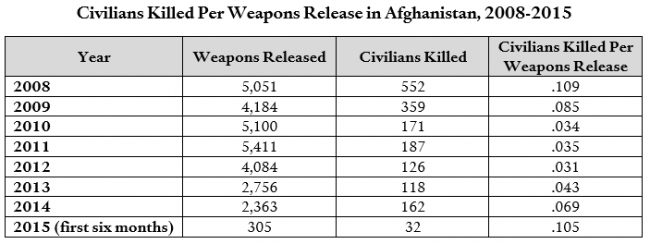The Increasing Prevalence of Civilian Casualties From Air Strikes in Afghanistan

More on:
This morning, Gen. John Campbell, Commander, International Security Assistance Force and U.S. Forces-Afghanistan, provided partial clarity about a U.S. aerial attack in Kunduz, Afghanistan against a Doctors Without Borders/Médecins Sans Frontières (MSF) emergency trauma hospital, which MSF reported killed twelve staff members at least ten patients, while injuring thirty-seven people including nineteen staff members. Gen. Campbell revealed that the attack was conducted by an AC-130 gunship at the request of Afghan ground forces taking enemy fire: “An airstrike was then called to eliminate the Taliban threat and several civilians were accidentally struck.” In addition, Campbell announced:
“I have ordered a thorough investigation into this tragic incident and the investigation is ongoing. The Afghans have ordered the same. If errors were committed, we will acknowledge them, we’ll hold those responsible accountable, and we will take steps to ensure mistakes are not repeated.…We’re going to do everything we can in this case to be open and transparent.”
If this investigation is actually open and transparent it would be truly extraordinary, given that despite over 1,700 Afghan civilians having been killed by coalition airstrikes since 2008, there have been few detailed public investigations released. The most critical and impactful element of such investigation should be to understand why such mistakes are being repeated more frequently in the past few years. The chart below combines the monthly U.S. Air Force Central Command (AFCENT) airpower statistics for Afghanistan, with the biannual reports from the United Nations Assistance Mission in Afghanistan (UNAMA) on the protection of civilians in armed conflict reports.
Gen. Campbell is scheduled to testify tomorrow morning before the Senate Armed Services Committee. The first question put to Gen. Campbell should be why is the harm to Afghan civilians from coalition airstrikes (per weapons release) actually increasing? And why have the promises by previous U.S. commanders in Afghanistan to prevent civilian casualties from airstrikes gone unfulfilled?

More on:
 Online Store
Online Store
